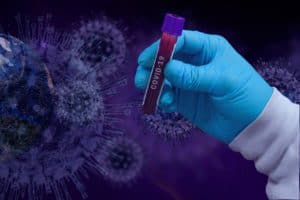Last Updated on January 6, 2024 by The Health Master
Schedule M
Download Schedule M dated 28-12-2023, the link is given below the article: In a significant development in the pharmaceutical regulatory landscape, the Indian government, through a notification dated 28th December 2023, introduced G.S.R. 922(E), which proposes amendments to the Drugs Rules, 1945.
This move aims to address evolving challenges in the pharmaceutical sector, ensuring the quality and safety of pharmaceutical products. Let’s delve into the intricacies of these amendments and their implications.
Background of the Amendment
To comprehend the gravity of these changes, it’s crucial to understand the background that prompted the government to propose amendments to the existing Drugs Rules.
The amendments come in response to the dynamic nature of the pharmaceutical industry and the need to align regulations with international standards.
The government initiated a public consultation process, inviting objections and suggestions, emphasizing transparency and inclusivity.
G.S.R. 922(E) dated 28-12-2023 – Key Highlights
The heart of this regulatory shift lies in the Government of India’s notification, G.S.R. 922(E) dated 28-12-2023.
This section highlights the key aspects of the proposed amendments, setting the stage for a detailed exploration of the changes in the Drugs Rules, 1945.
Rule 74 Amendment
One of the pivotal changes proposed in G.S.R. 922(E) pertains to Rule 74, specifically targeting clause (o).
The amendment replaces the existing reference to “Good Manufacturing Practices” with a broader scope, now encompassing “Good Manufacturing Practices and Requirements of Premises, Plant and Equipment for Pharmaceutical Products.”
Rule 76 Amendment
Continuing the trend, Rule 76 undergoes modifications in clause (8).
Similar to the changes in Rule 74, the words “Good Manufacturing Practices” are substituted with a more comprehensive term, now covering “Good Manufacturing Practices and Requirements of Premises, Plant and Equipment for Pharmaceutical Products.”
Rule 78 Amendment
Rule 78, too, sees an alteration in clause (p).
The amendment mirrors the changes in Rule 74 and Rule 76, expanding the scope to include “Good Manufacturing Practices and Requirements of Premises, Plant and Equipment for Pharmaceutical Products.”
Replacement of Schedule M
A crucial facet of the amendments involves the complete replacement of Schedule M in the Drugs Rules, 1945.
The new Schedule introduces updated guidelines, reflecting advancements in pharmaceutical manufacturing practices.
Implementation Timeline
As the amended Drugs (….. Amendment) Rules, 2023 come into force, a crucial aspect to consider is the timeline set for their implementation.
This timeline is categorized based on the turnover of pharmaceutical manufacturers, aiming to provide a structured approach to compliance.
Categorization Based on Turnover
Manufacturers are divided into two categories concerning their turnover – large manufacturers with a turnover exceeding 250 crores and small/medium manufacturers with a turnover equal to or less than 250 crores.
This categorization forms the basis for the timelines stipulated for compliance.
Timeline for Large Manufacturers
For large manufacturers falling in the category with a turnover greater than 250 crores, the implementation timeline is set at six months from the date of publication of the amended rules.
This relatively shorter timeframe emphasizes the urgency for these manufacturers to adapt to the new regulatory landscape swiftly.
Timeline for Small and Medium Manufacturers
On the other hand, small and medium manufacturers, encompassing those with a turnover of 250 crores or less, are granted a more extended timeline of twelve months from the date of publication of the rules.
This allows these manufacturers additional time for meticulous planning and execution of the necessary changes.
Preparation and Compliance Strategies
Manufacturers, irrespective of their category, need to strategize and prepare for compliance within the stipulated timelines.
This may involve internal assessments, process reengineering, and technology adoption to align with the amended rules.
Download Schedule M
Licensing procedure for manufacturing of Drugs
Procedure to obtain license for manufacturing of Cosmetics
Procedure to obtain license for manufacturing of Homoeopathic Medicines
Procedure to obtain license for manufacturing of Medical Devices
Procedure to obtain License to Manufacture drugs for testing and analysis purposes
Procedure to obtain license for Commercial Testing Laboratories
Procedure to obtain license for Blood Centre (Blood Bank)
Procedure to obtain license for Medical Store / Pharmacy
Latest Notifications: D&C Act 1940
Latest Notifications: D&C Rules 1945
Latest Notifications: Cosmetics
Latest Notifications: Medical Devices
Latest Notifications: Homoeopathic
Latest Notifications: Blood Centre / Bank
Latest Notifications: Banned Drugs
Latest Notifications: NDPS Act
Latest notifications – DPCO / NPPA
Latest Notifications: EC Act (Essential Commodities Act)
Latest Notifications: DMROA (Drugs and Magic Remedies Act)
Latest Notifications: Testing Laboratories
Latest Notifications: New Drugs and Clinical Trials
Latest Notifications: COTPA (Cigarettes and Tobacco products)
Latest Notifications: General (Pharmaceuticals)
Latest Notifications: Hospital – RMI (Recognized Medical Institution)
For informative videos by The Health Master, click on the below YouTube icon:
For informative videos on Medical Store / Pharmacy, click on the below YouTube icon:
For informative videos on the news regarding Pharma / Medical Devices / Cosmetics / Homoeopathy etc., click on the below YouTube icon:
For informative videos on consumer awareness, click on the below YouTube icon:









